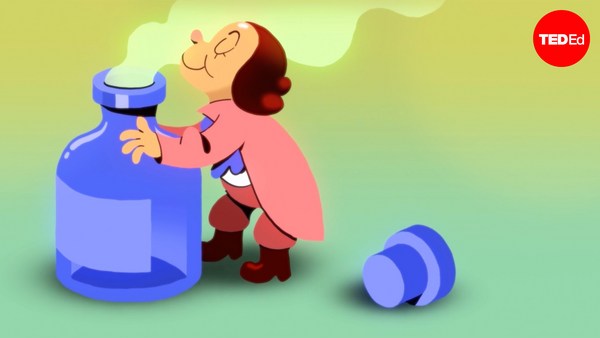On December 14th, 1799, former US President George Washington woke struggling for breath, his throat searing with pain. He died later that day, from what’s suspected to have been a badly infected epiglottis, but not before he was prescribed an enema, steam therapy, and rigorous bloodletting. During four bleeding sessions, Washington lost approximately two liters— roughly 40%— of his body’s blood supply. And yet this wasn’t totally out of the ordinary for the time.
Bloodletting was a pervasive medical practice that dated at least as far back as ancient Greece. Physicians like Hippocrates believed good health came from balance among what they called the body’s four humors: yellow bile, black bile, phlegm, and blood. They attributed bad health to humoral imbalance, so treatments included purging, peeing, enemas, and bloodletting. How people were bled varied with time, place, and practitioner. Sometimes it was with sharp tools like quills, animal teeth, and metal blades; others, using leeches; or through wet cupping, which involved scraping the skin and drawing blood out with heated glass containers. In the 2nd century, the prolific Greco-Roman physician Galen declared blood the most dominant humor and recommended bloodletting for just about every ailment imaginable.
The practice flowed into the medieval Islamic and European world, with physicians discussing its do’s and don’ts extensively. It was to be avoided during cold weather, and certain body parts were to be used or bypassed based on the lunar cycle, zodiac calendar, and location of the ailment.
While on Crusade in the late 12th century, King Richard the Lionheart of England postponed negotiations with Sultan Saladin’s envoy to recover from one of his regular, preventative bloodletting sessions. In 1685, after King Charles II of England began convulsing, he was bled from multiple veins, barraged by enemas, emetics, and purgatives, and fed an elixir containing powdered human skulls. Despite bloodletting’s ubiquity, not everyone was enthusiastic. In the feverish days preceding the poet Lord Byron’s death in 1824, he called his physicians a “set of butchers,” as they went about draining some 2.5 liters of his blood.
So, why did bloodletting stick around so long? Well, simply receiving care might have led to perceived benefits by way of the placebo effect. And although some bloodletters were dangerously overzealous, modest bloodletting may not have been all bad. Blood donors today give about half a liter of blood at a time, and some studies suggest that regular donors do see long-term cardiovascular benefits. It’s also theoretically possible that, when done sparingly and early on, bloodletting could help fight some infections by reducing levels of iron, which infecting microbes use for energy. But back then, no one even knew that pathogenic microbes existed yet, and bloodletting also caused infections. This problem became especially pronounced in the 1700s, when the spring lancet was invented, with its tough-to-clean retractable blade.
Bloodletting gained popularity throughout the 1700s. To supply the booming industry, leech catchers waded through boglands, using themselves as well as animal meat and organs as bait. But bloodletting’s shortcomings began to show. Philadelphia physician and Declaration of Independence signatory Benjamin Rush was one of bloodletting’s biggest backers. He advocated for taking 80% of a patient's blood. Rush also tended to over 100 patients daily, and his front yard became fetid and fly-infested from all the tossed-out blood. In the 1790s, English journalist William Cobbett accused Rush of dramatically increasing Philadelphia’s daily mortality rates, but Rush successfully sued Cobbett for libel.
Still, as late as 1836, the largest London leech suppliers were importing around 600,000 leeches for bloodletting every month. But as Cobbett and others dug into the data, bloodletting’s supposed benefits became all the more dubious. And by the 20th century, its use slowed to a trickle, when humoral theory was finally replaced by germ theory, which demonstrated that many illnesses were actually caused by microorganisms.
Today, bloodletting is used to treat certain blood disorders like hemochromatosis, which causes dangerous levels of iron to build up in the bloodstream. But generally, bloodletting has been relegated to the ranks of outdated, misguided medical treatments, bled dry by progress.


